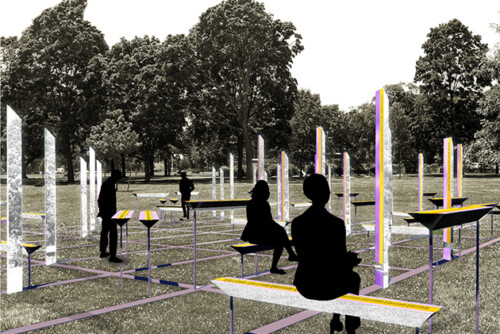Baker’s dancing onstage and onscreen can be read against a background of fascination with African art, made fashionable by young artists and displayed in Paris galleries beginning in 1917, with ethnographic museological concerns about whether to display primitive artifacts as technological or sacred objects, and with the elaboration of an ethnographic cinema. Her particular mix of primitivism and urbanity, glamour and naturalness, and “high” and “low” culture aligns her work—at least on the surface—with what James Clifford has called “ethnographic surrealism.” But Baker’s work, especially in the thirties, lends itself to another reading.
Opposing the idea of the existence of such a “surrealist ethnography,” Denis Hollier has argued that the concerns of French avant-garde writers and museologists were very different. In the displacement of objects from Africa into French museums, and in the avant-garde interest in such objects, Hollier finds two very different driving passions. Against Clifford, he argues in “The Use Value of the Impossible,” introducing the re-edition of the 1930-31 ethnographic review Documents, that the ethnographic museology of the thirties was a reaction against French Surrealist and formalist interest in African art in the twenties. Clifford’s conclusion that ethnography and Surrealism share an erasure of the difference between high and low in culture does not, in Hollier’s view, take into account the shock provoked by the ethnographic review Documents. Contributors Georges-Henri Riviere, undertaking the rehabilitation of the Musée d’Ethnographie, and Paul Rivet, the museum’s director beginning in 1927, both declared themselves opposed to the primitivism à la mode of artists, poets, and musicians. For Hollier, what drove the organizers of Documents was a return to the “primitivism” of use value as opposed to exchange value, in a resistance to twenties formalism and to the “mercantile decontextualization” of African art that marked the French thirties.
For the Documents collective—Rivet, Marcel Mauss, and Lucien Levy-Bruhl of the Institut Ethnologie, with George Bataille, Leiris, Marcel Griaule, Andre Schaffner, and others—nostalgia for use value followed two inclinations, what Hollier calls “secular” and “sacred.” Ethnographers’ interest in use value takes them back to the technical, social, and economic utilization of objects; others, like Leiris, are interested in what Bataille calls the “unproductive use” of sacred objects. Without being orthodox, Documents follows Marx’s opposition between use value and exchange value set out in the opening of Capital. The ethnographers wanted a museum that would not automatically reduce objects to their formal or aesthetic properties but would rather exhibit, at some remove from the culture of the object’s actual use, what would be a “use value on vacation” or a use value endimanché—in its Sunday best. The ethnographers’ resistance to exchange value and exhibition value led them to elaborate new techniques of collection and presentation of objects as re-creating a use value of art that “cannot be transposed or transported.”
Jean-Paul Sartre’s formula for cultural consumption, “Jazz is like bananas—it must be consumed on the spot,” suggests another twist on the question of mercantile decontextualization. Baker’s famous banana costume that put Paris in thrall was at once a mercantile gesture of her white promoters and a subtle commentary on colonialism and consumption. Capitalizing on Baker’s color, her management and choreographer gave her a “savage” setting on a concert stage in which to present both her natural talent and her constructed stardom. Transporting both her bananas and her audience, deferring the consumption of the first while offered for the consumption of the second, Baker’s dancing both mocks Parisian concerns about “authentic” African art and at the same time creates cultural capital.



